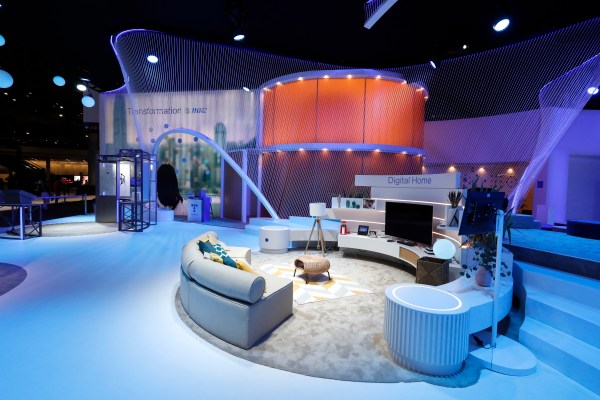What is home automation?
Home automation is a set of technologies and systems that automate the functions of a home. As connectivity evolves and IoT allows for increasingly sophisticated automation, home automation takes one step further and becomes a Smart Home.
What was considered the house of the future decades ago is now the reality of the connected home. And this is thanks to the digital transformation that is taking place in all productive and social domains. Something similar can also be applied to the automated management of consumption in buildings utilities, Smart Building or building automation, or automation in the industrial sector.
The relationship between IoT and home automation
The growth of ICT in recent years has led to an unprecedented digital transformation, especially driven by the coronavirus health crisis. Among the major innovations is the implementation of the 5G network, which supports other technologies such as IoT. Both are needed to connect thousands of sensors and devices to the network to analyse the data they produce and manage and automate their functions through a platform.
Home automation goes beyond imprving home security and uses the transformation of all sorts of “unconnected” appliances into internet-connected devices, with the aim of making people’s lives easier. Security is precisely one of the areas that has most exploited this capacity of technology in households. Its application in domestic and private spaces has been one of the greatest benefits brought about by the digitalisation of devices. Home security systems are already connected to the net so users can see what is happening in their homes from their smartphones, and take action if necessary.
Home automation and energy cost control
Over the next 35 years, energy consumption will double, according to the Institute for Energy Diversification and Saving (IDAE in its Spanish initials). This increased consumption, together with other factors such as climate change and geopolitical crises, can lead to imbalances between energy supply and consumption. Controlling this expenditure has therefore become paramount for families, to such an extent that it has come to change some household habits.
The implementation of digital tools to reinvent homes and design smart homes that help optimise the use of the energy consumed, enabling responsible management that increases savings without giving up comfort and well-being. And home automation is positioning itself as one of the most effective consumer solutions. The reason is that smart control and automation technology tools provide an average of 30% savings on home energy consumption, according to data from the Spanish Home Automation Association, CEDOM.
Lighting, air conditioning or even entertainment. There are simple options for moving from an analogue home to a smart home, which optimise energy use in the home by installing sensors or cameras. For example, the use of smart light bulbs that connect via home Wi.Fi. Automatic or smartphone-controlled switching on and off can also be used as a deterrent when the house is left empty for short periods of time.
The installation of smart thermostats allows the temperature to be regulated by zones and independently, according to the use of each room, and depending on the time of day and even the weather outside, with personalised consumption depending on the needs and environmental situation.
Similarly, smart plugs help to convert traditional household appliances into “smart” ones, making it unnecessary to replace all electronic devices and appliances with new ones. These sockets monitor consumption and warn of any possible malfunction of the appliance.
The growth of the smart home, a global trend
In Spain, the smart solutions market is expected to grow by 300% by 2024. This sector is led by the United States, although Europe is close to these levels. Specifically, 40% of Spanish households already have a connected device, and 60% of newly built homes are designed to be smart. Thus, according to a study carried out by the technology consultancy Jabil, an annual growth of over 11% worldwide is estimated for the next few years, until 2025.
These growth figures reflect a real trend based on the ease of transformation of the “analogue” home into an automated home, whose installation requires very few complications, thanks to the incorporation of wireless home networks.
Even the transformation of a house into a home automation system can be done in parts, avoiding large investments, connecting the various devices to voice assistants, sensors and even gestures. All these solutions are designed to control energy use and ensure comfort.









